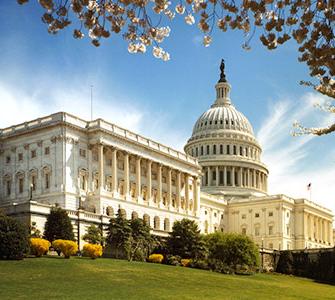
Coronavirus Stimuli: How will they affect Individuals and Businesses?
There’s been a lot of information circulated with regards to coronavirus-related legislation that’s either been signed into law or is currently proposed. However, some of the information is either inaccurate, a mixture of truth, or just plain false. This article will discuss some of the stimulus packages that have already passed, items that are proposed, and measures seeking to directly benefit business owners.
On March 4, 2020, Congress passed the first coronavirus package in the amount of $8.3 billion. Roughly $500 million was allocated to allow Medicare providers to administer telehealth services to assist elderly patients unable to leave their homes. $2.2 billion was allotted for federal, state, and local public health agencies to prevent, prepare and respond to the coronavirus. $1 billion in loan subsidies was set aside to be made available to help small businesses, small agricultural cooperatives, small aquaculture producers, and nonprofit organizations. Finally, more than $3 billion was distributed for research and development of vaccines, therapeutics, and diagnostics to prevent or treat the effects of coronavirus.
On March 18, 2020, the “Family First Coronavirus Response Act” was passed by Congress. This stimulus package covered the full cost of Covid-19 testing for all Americans, including those uninsured. The package also accounts for two weeks of paid sick leave for workers at companies with 500 or fewer employees (this portion was estimated to help approximately 87 million Americans). The package also included more than $1 billion to maintain federal nutrition assistance, such as subsidized lunches for low-income children, food banks, and meals for eligible seniors in addition to $1 billion to help states process and cover unemployment insurance claims.
This leads us to the third coronavirus stimulus package, which, as of March 25, 2020, was passed 96-0 by the US Senate. The legislation then headed to the US House of Representatives was passed on March 27, 2020, which was approved by voice vote. The legislation calls for direct payments of $1,200 per individual if they made $75,000 or less in 2018, or $2,400 per married couple filing jointly with an additional $500 to be paid per dependent if they made less than $150,000 collectively in 2018. However, the payments would start to phase out for individuals with adjusted gross incomes of more than $75,000, and those making more than $99,000 would not qualify at all. The thresholds are doubled for couples. Phaseouts apply; for every $100 of income above those thresholds, your check will drop by $5. So, if you are a single filer earning $75,100, your check will be $1,195 ($1,200-$5). If you are a single filer earning $85,000, your check will be $700 ($1,200-$500).
If you do the quick math on that, it means you’ll phaseout completely (meaning you’ll receive nothing) once you hit $99,000 as a single filer, $198,000 as a married couple filing jointly, or $146,500 for heads of household.
Another impact for individuals in this stimulus package is the freeze on federal student loan payments. Under the bill, federal student loan payments would freeze until September 30, 2020, without accumulating any interest or penalties. From a retirement standpoint, the bill would allow for tax-favored “coronavirus-related” distributions from certain retirement plans of up to $100,000 (the 10% early withdrawal penalty would not apply). Also, income attributable to those distributions would be subject to tax over three years (as opposed to one). Qualifying taxpayers would also be allowed to repay their retirement plans to make up for money withdrawn to pay coronavirus-related expenses (including loans and distributions). The proposal would also waive the required minimum distributions for 2020.
From a small business standpoint, the bill would expand eligibility for small businesses (those under 500 employees) to receive a loan of up to $10 million under the Small Business Act. The loans can be used for payroll as well as paid sick, medical, or family leave, costs related to the continuation of group health care benefits, mortgage payments and rent, utilities, and other debts. The loans could also be extended to sole proprietors, independent contractors, and self-employed persons. No collateral would be required, nor any personal guarantee. The loans are eligible for forgiveness if they meet specific criteria. The bill provides unemployment benefits for workers who are out of work; a temporary Pandemic Unemployment Assistance program would provide benefits for those not traditionally eligible for unemployment benefits, including self-employed workers and independent contractors.
The stimulus package also calls for another tax credit for employers who hold onto employees during the pandemic. The 50% credit would offset the employer’s share of Social Security taxes up to $10,000 of qualified wages per employee. For employers with more than 100 full-time employees, qualified wages are wages paid when they are not providing services due to COVID-19. For eligible employers with fewer than 100 full-time employees, all employee wages qualify for the credit. Additionally, the IRS and Department of Treasury also announced two new refundable payroll tax credits. For eligible employers, the credits establish the refundable paid sick leave credit and paid childcare leave credit. The credits are meant for companies with less than 500
employees. Workers can get as many as 80 hours of paid sick leave as well as expanded paid childcare leave when their children’s schools are closed or childcare providers are unavailable.
Under guidance to be released in the future, qualifying businesses that pay sick or childcare leave under the new law will be able to keep the same amount in payroll taxes as they leave they paid. This will allow companies to get up to $511 per day for a total of 10 days for each employee under the paid sick leave credit. For the family and medical leave credit, companies can get up to $200 per day for up to 10 days for employees who take much time away from their job. Eligible employers can also receive a refundable childcare leave credit up to $200 per day for as long as 10 weeks. Businesses can claim the credits based on the qualifying leave provided between the effective date and the last day of this year. Self-employed individuals under similar circumstances qualify for
equivalent credits. The IRS expects to process the tax credit claims within two weeks or less, with details of the new expedited procedure to be announced sometime before April.
The intent behind the legislative measures stated herein is to provide both employers and employees with closure and stability. The employers are provided with tax credits for employees that are forced to stay home to take care of their family and the employees are able to get paid sick leave and, if applicable, paid childcare leave.
The professionals at The Center for Financial, Legal and Tax Planning are focusing on keeping taxpayers informed with the most up-to-date information with regards to coronavirus stimuli. Please contact us at 618 997-3436 for any other questions or guidance.

Roman Basi
ROMAN A. BASI IS AN EXPERT ON CLOSELY HELD ENTERPRISES. HE IS AN ATTORNEY/CPA AND THE PRESIDENT OF THE CENTER FOR FINANCIAL, LEGAL & TAX PLANNING, INC.

Michael Hampleman
MICHAEL S. HAMPLEMAN IS AN ASSOCIATE ATTORNEY AT THE CENTER FOR FINANCIAL, LEGAL & TAX PLANNING, INC.









